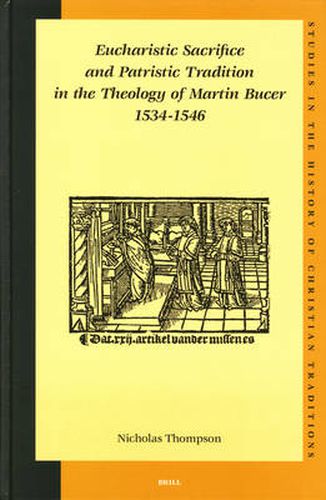Readings Newsletter
Become a Readings Member to make your shopping experience even easier.
Sign in or sign up for free!
You’re not far away from qualifying for FREE standard shipping within Australia
You’ve qualified for FREE standard shipping within Australia
The cart is loading…






Luther described the Mass as the greatest and most horrible abomination of the papal church. On this, he argued, nothing could be surrendered. However, during the 1530s and early 1540s, the Strasbourg reformer Martin Bucer (1491-1551) sought rapprochement with the Catholics on precisely this matter. This book looks at Bucer’s overtures to Catholic moderates in the era of the religious colloquies. He proposed to circumvent the Reformation impasse by returning to the Eucharistic theology of the church fathers and early scholastics. These efforts culminated in the Eucharistic articles of the Worms-Regensburg Book (1541). Bucer’s falling out with the same Catholics in aftermath of the Colloquy of Regensburg reveals the extent to which the agreed articles were based on misunderstanding-as well as the considerable common ground that continued to exist between them. In its examination of this most fraught of Reformation debates, the book also sheds light on Bucer’s ecumenical theology and his aspirations for a reunion of the German and European churches.
$9.00 standard shipping within Australia
FREE standard shipping within Australia for orders over $100.00
Express & International shipping calculated at checkout
Luther described the Mass as the greatest and most horrible abomination of the papal church. On this, he argued, nothing could be surrendered. However, during the 1530s and early 1540s, the Strasbourg reformer Martin Bucer (1491-1551) sought rapprochement with the Catholics on precisely this matter. This book looks at Bucer’s overtures to Catholic moderates in the era of the religious colloquies. He proposed to circumvent the Reformation impasse by returning to the Eucharistic theology of the church fathers and early scholastics. These efforts culminated in the Eucharistic articles of the Worms-Regensburg Book (1541). Bucer’s falling out with the same Catholics in aftermath of the Colloquy of Regensburg reveals the extent to which the agreed articles were based on misunderstanding-as well as the considerable common ground that continued to exist between them. In its examination of this most fraught of Reformation debates, the book also sheds light on Bucer’s ecumenical theology and his aspirations for a reunion of the German and European churches.